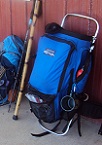ORIGINAL: Lokasenna
ORIGINAL: Chickenboy
ORIGINAL: Lokasenna
being able to test for antibodies is going to be critical to our understanding. We aren't able to do so yet.
Antibody studies (presumably from blood samples) are a poor way of tracking a fulminant outbreak. Serologic antibody screening is useful for determining historical exposure, but antibody production takes several weeks post-exposure to develop sufficient to detect. It's a 'rear view mirror' sort of diagnostic approach.
Viral detection, whether its RT-PCR, antigen kit detection or virus isolation is the best methodology to detect an outbreak as it is occurring. Serosurveillance will be interesting down the road to look at how many people were affected from a historical perspective.
Right, that's what I meant. It's important to help us learn about what to expect, and if we had a way to test for antibodies for this one in NYC on a widespread basis (for example), it would be helpful knowledge as infections spread to other areas. Correct? If nothing else, it would really help nail down the R0, right?
Sorry, I may have been unclear. When I said 'exposure', I meant historical exposure to the individual unit (a single person), not exposure rates between people (R0). Historical serosurveillance will only really be able to answer the question (weeks/ months later) of whether this person has ever been exposed to and mounted an immune response against this particular viral challenge. With some temporal exceptions (e.g., acute and convalescent serology), historical serosurveillance only really provides a binary "yes/no" answer.
Still, I will be interested to know-down the line-what the overall exposure rates will be for this. One hears politicos grasping hypothetical numbers of "50-70% of the population" will be exposed to this virus. I dunno. It's possible, I guess. But my gut says that's probably too high. Time will tell.











